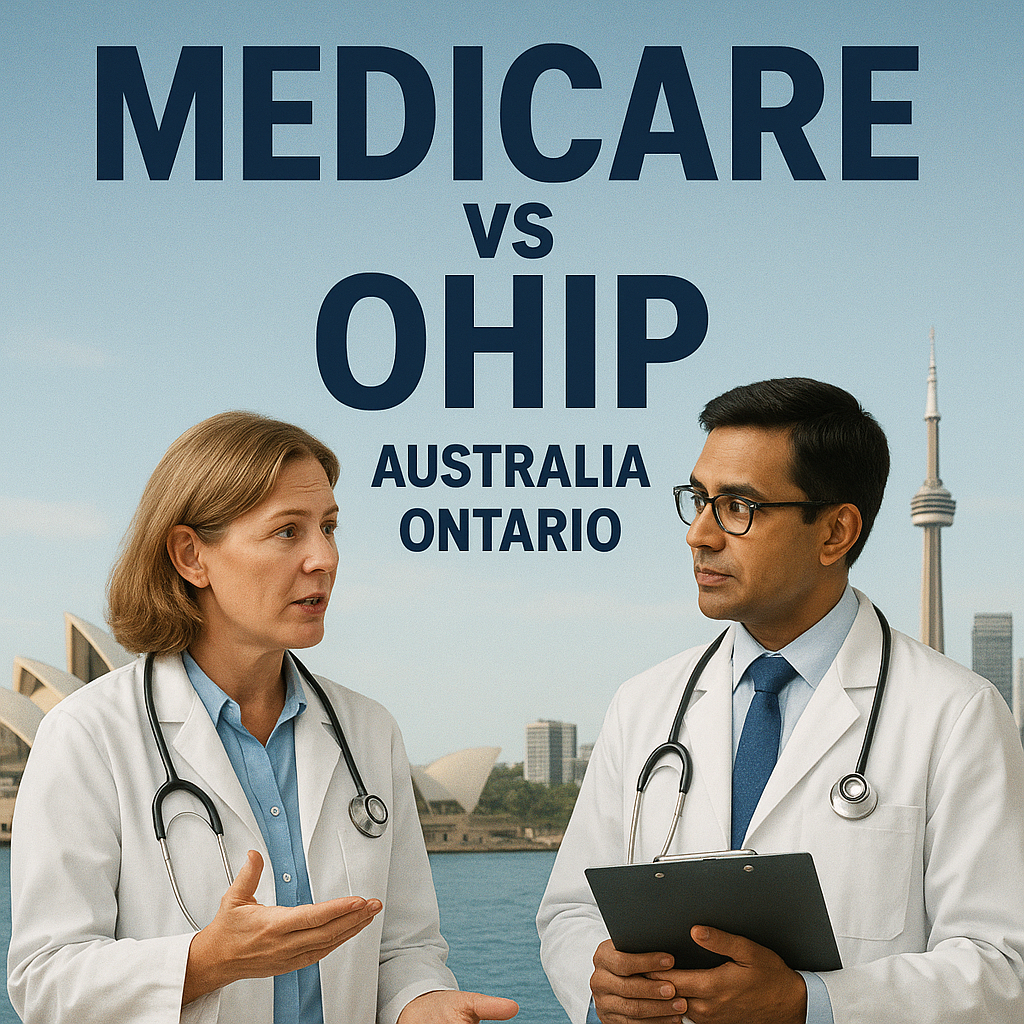Compare Medicare (Australia) and OHIP (Ontario, Canada) to make informed decisions about healthcare as an immigrant or permanent resident.
Introduction
Choosing between Australia and Canada often hinges on their public health coverage. With healthcare costs rising, understanding Medicare vs OHIP helps new arrivals and permanent residents make informed decisions about their wellbeing. Let’s break down the essentials—coverage, eligibility, and next steps for immigrants and PR holders.
Understanding Medicare and OHIP: Structure and Coverage
Australia’s Medicare is a national, tax-funded system providing universal healthcare access to citizens and permanent residents. It covers most GP visits, hospital stays, and subsidizes prescription medications. Some costs, such as dental or ambulance, may require out-of-pocket payment or private insurance. A 2% Medicare levy from taxable income helps fund the system; private insurance is optional, offering faster access or additional services.
Canada’s OHIP (Ontario Health Insurance Plan) is a provincial plan under the broader Canadian Medicare system. It covers doctor and hospital visits, laboratory tests, and emergency care. However, services like dental, vision, or prescription drugs usually require private insurance or are limited to specific groups—children, seniors, or those on social assistance.
Both systems provide a safety net for basic health needs. However, out-of-pocket expenses and the scope of additional services differ. For PRs, understanding these nuances is essential for managing healthcare costs.
Access for Immigrants and PR Holders
Eligibility for healthcare in both countries is tied to immigration status. In Australia, permanent residents receive immediate access to Medicare. International students and temporary workers must rely on private insurance or Overseas Visitor Health Cover. Once PR is granted, switching to Medicare is automatic and offers subsidized care and pharmacy benefits.
In Ontario, newly arrived PRs often face a waiting period (typically up to three months) before OHIP kicks in. During this time, private insurance is advisable. Certain groups, such as refugees, may have interim federal coverage until provincial eligibility is established. OHIP and the broader Canadian system prioritize resident status and registered address.
Both countries exempt undocumented migrants from full coverage, though Australia’s reciprocal agreements with select countries can provide emergency care under Medicare. Canada’s system supports refugees and asylum seekers via temporary federal programs until they become provincially insured.
Comparing Benefits and Drawbacks: Which Is Better for Migrants?
Public health insurance comparison Australia vs Canada reveals strengths and weaknesses in both systems.
- Australia’s Medicare:
- Pros: Immediate access for PRs, choice of public/private providers, broad GP coverage, and lower wait times for specialty care due to a mix of public and private sector delivery.
- Cons: Higher reliance on private insurance for dental, vision, and ambulance; rural regions may have limited access; extra charges for specialists.
- Canada’s OHIP and Medicare:
- Pros: Universal coverage for core services, less dependence on private insurance for basic needs, lower overall administrative complexity.
- Cons: Longer wait times for non-urgent procedures, varying access to dental, vision, and medications, waiting periods for newcomers.
When considering which country has better healthcare for migrants, Australia stands out for access speed and medical infrastructure but requires more supplemental insurance. Canada excels in universal core coverage but suffers from longer wait times.
For PR holders in both countries, coverage depth and ease of integration matter more than ubiquity of access. Weighing these factors helps migrants make the best healthcare choices for themselves and their families.
Conclusion
Both Medicare and OHIP offer robust foundational healthcare for immigrants and PR holders. The right choice depends on personal needs, wait time tolerance, and whether supplementary coverage fits your budget. Consult local healthcare experts and immigration professionals to optimize your coverage.

